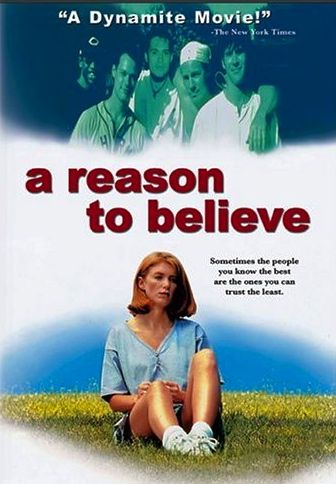
| None | Light | Moderate | Heavy | |
|---|---|---|---|---|
| Language | ||||
| Violence | ||||
| Sex | ||||
| Nudity |
Content:
(H, PC, LLL, SSS, NNN, A, D) Humanist worldview where right or wrong is based on the right to self & one’s safety; politically correct issue of date rape; strong language with 64 obscenities & vulgarities & 1 profanity; brief demonstration clash between 2 campus groups; gross immorality involving sexual situations that include 3 graphic sex scenes, masturbating, group sex, rampant fornication, explicit & vulgar sex talk & sex act descriptions, & voyeurism; full & partial male & female nudity; alcohol use; and, drug use
More Detail:
In the film A REASON TO BELIEVE, the arguments for and against date rape are so ponderous and consuming that they take away from the story. Charlotte attends the annual fraternity bash, gets drunk and is raped by her boyfriend’s best friend Jim. Horrified and traumatized, Charlotte slowly learns that date rape is hard to prove and that people hold her accountable for the incident. Urged by the campus women’s group leader, Linda, Charlotte goes to the college board to press charges but finds the odds against her.
The film finally takes a politically correct viewpoint of date rape, but not before endless debates for and against the heinous act. It examines the right to demand safety despite also demanding freedom of sexual conduct and lifestyles. With an overriding preoccupation to get its message across, the film’s characters are limited to being only conveyors of the issue’s arguments, and the result is a tiresome movie. Moreover, there are graphic sex scenes, explicit and vulgar sex talk, group sex, full nudity, strong language, and rampant substance abuse. At the end of the film, the morality and values applauded are based entirely on the perspective of self. Furthermore, the film sees no spirituality other than physical pleasures and ultimately looks no higher than self-interest for fundamental moral standards.
The film finally takes a politically correct viewpoint of date rape, but not before endless debates for and against the heinous act. It examines the right to demand safety despite also demanding freedom of sexual conduct and lifestyles. With an overriding preoccupation to get its message across, the film’s characters are limited to being only conveyors of the issue’s arguments, and the result is a tiresome movie. Moreover, there are graphic sex scenes, explicit and vulgar sex talk, group sex, full nudity, strong language, and rampant substance abuse. At the end of the film, the morality and values applauded are based entirely on the perspective of self. Furthermore, the film sees no spirituality other than physical pleasures and ultimately looks no higher than self-interest for fundamental moral standards.


 - Content:
- Content: 

